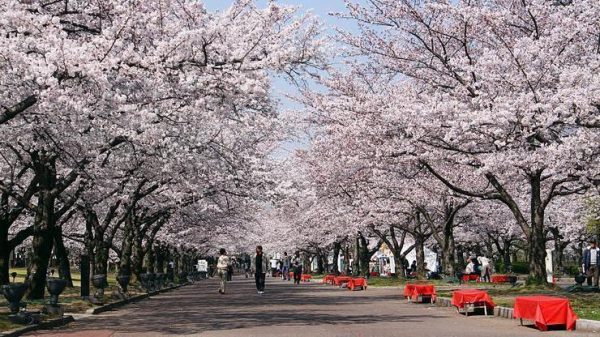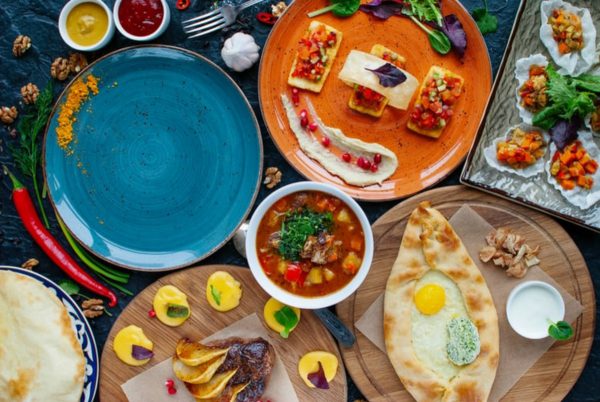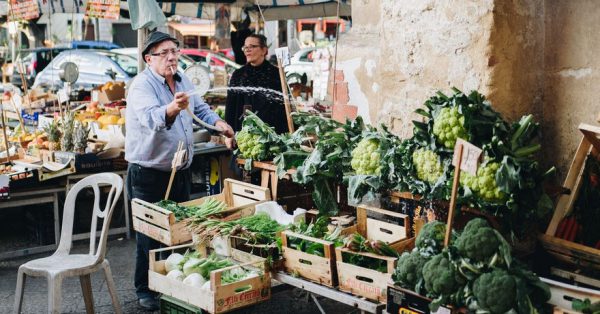You’re probably wondering how the Japanese could eat rice for every single meal and how it is possible to not get tired of the same staple ingredient. Fear not, because there are actually many ways in which rice is used in different Japanese meals, which can be seen in the country’s cuisine. Let’s dive in!
Types of Rice
To understand how rice can be used in multiple ways, we must first understand what kind of rice the Japanese use. Asian rice grains are often distinguished into 2 categories: Indica rice and Japonica rice. Both are widely used, where Indica is long-grained, non-sticky rice and Japonica is short-grained, stickier rice.
Even within the Japonica rice group, rice can have different stickiness levels. The least sticky rice (uruchimai) is used in ordinary meals, often associated with sushi rice and to develop sake. The stickiest rice, glutinous rice (mochigome), is used for foods like mochi with a chewy texture.

Sushi rice is a specific preparation of Japanese rice. It mixes ordinary non-sticky rice with rice vinegar, sugar, and salt. The sushi rice needs to be at room temperature or cooler to be used in sushi so that it is easier to handle and less sticky when making sushi.
Rice in a Meal
The most common consumption of rice is with a meal. Rice is seen as a main dish and accompanied by other side dishes, such as miso soup, pickled vegetables, and any sort of cooked meat, seafood, and/or vegetables. This is called okazu. In this setting, proper etiquette says to keep the other foods separated from the rice so as not to soil the rice. And it is also important to finish the last grain of rice to show gratitude for what is given.

However, when eaten outside of a standard meal of okazu, toppings are allowed to be placed on the rice, such as furikake, a seasoning of sesame seed, seaweed, dried fish, sugar, and salt. There are many variations of furikake, including adding other flavors or seafood.
A typical way of serving food on top of rice is donburi, which is often served with a soy sauce based sauce. Variations include unadon (eel bowl), katsudon (deep-fried, breaded pork cutlets on rice), or gyūdon (beef bowl).

A popular japanese breakfast is tamago kake gohan, raw egg and soy sauce on top a bowl of rice. To eat it, mix in all the ingredients into the rice bowl so that the egg will be cooked.
Like many East Asian cultures, Japanese use leftover rice to make fried rice with various ingredients and often garnish it with seaweed. Another way to use leftover rice is to pour tea (usually green tea) over the rice to make chazuke. It can also be garnished with pickles, seaweed, and other flavorings. With the influence of Western foods came the development of yōshoku, or any Western-influenced dish. Such dishes include curry or omurice, an omelette wrapping fried rice.


Another common sushi at sushi bars is nigirizushi, or simply nigiri. Sushi rice is pressed into oblong spheres layered with a topping, often seafood or sweet egg tamago. For toppings that may easily fall off like roe (fish egg), a piece of seaweed is wrapped around the sushi. Traditionally, nigirizushi can be eaten with fingers, so don’t be afraid to drop those chopsticks! When made correctly, the nigiri can and should be eaten in one bite.

Inarizushi is a style that encloses sushi rice within a fried tofu pouch, and sometimes made with egg instead. This simplest form of sushi is chirashizushi because it places raw fish on top of a bowl of rice. Lastly, there is oshizushi, a pressed sushi, where cooked toppings are lined at the bottom of a mold and rice is pressed above. To serve, the sushi is then inverted.
Similar to sushi is a food called onigiri. The difference is that onigiri uses normal rice, rather than sushi rice. Typically more rice is used and pressed into a fairly large-sized ball, or other shapes. They can be filled or topped with preserved food, which contains salty or sour ingredients, such as pickled plums or salted salmon. The rice balls are then wrapped in seaweed, which makes them easy to take away for a snack.

Rice in Desserts

The Japanese are also known for their rice-based desserts. The most common types are variations on mochi. This dessert uses the extra sticky, glutinous rice. To make it, traditionally the cooked rice is pounded until it becomes a smooth, sticky mixture. However, people currently make mochi with sweet rice flour mixed with water to produce the same sticky dough. Here are a few rice-based desserts:
- Botamochi: sticky rice mochi covered in a sweet red bean paste; often made in spring
- Dango: balls of mochi on a stick, served with various flavors, such as red bean paste, green-tea, chestnut paste, or sesame seeds

- Shiruku: sweet dessert soup with mochi and azuki beans
- Sakuramochi: pink mochi with a red bean paste filling and wrapped with a picked cherry blossom leaf
- Uirō: sweet steamed rice flour cake, similar to mochi; flavors include: green tea, azuki bean paste, chestnut, and more
- Monaka: sandwich of azuki bean filling between mochi wafers
Rice in Drinks
Not only can you eat rice, but you can drink it!
A non-alcoholic drink is genmaicha, a brown rice tea. White rice is often preferred over brown rice for eating, but roasted popped brown rice is a favorite to make a hot drink. Green tea is mixed in and sometimes matcha (powdered green tea) is used instead.
A low-alcohol rice fermented drink is amazake. Kōji mold is added to enable the fermentation process. Amazake is only fermented to develop the sugars rather than alcohol, although alcohol content still exists. It is an ingredient used in many desserts, snacks, and even as a sweetener. As a drink, it is diluted with hot water and sometimes ginger shavings and sold in some street markets.
Sake is a fermented Japanese alcohol. It is a type of rice wine where starch turns into sugar and then alcohol all in the same step. A special rice variety is used to produce sake and polished to a high quality to remove the outer layers of protein and fat and leave the core starch for processing. It often is served at an alcohol content of 15%.

Shōchū is a distilled Japanese alcohol made not only of rice but barley, sweet potatoes, buckwheat, or brown sugar. It is much stronger than sake, with alcohol content of 25%. It is drunk similar to other hard liquors in Western culture, on its own, or mixed with tea.
As you can see, rice is used in a multitude of ways in Japan. Hopefully you discovered a new dish or tradition. If you plan on visiting Japan soon, cooking classes and food experiences are a perfect way to get a deeper understanding of the culinary traditions of Japan.







